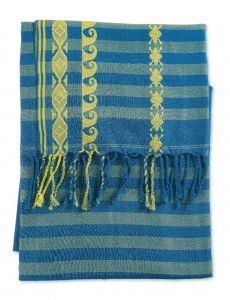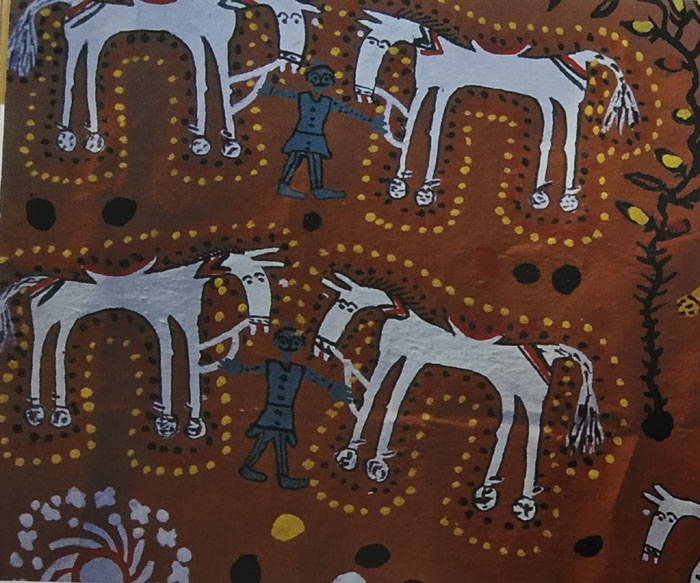The main cotton weaving centers are Shantipur, Dhaniakhal, Begampur, and Farasdanga. These centers are involved in the weaving of fine-textured saris and dhotis for men. Atpur in Hooghly district is well-known for coarser saris and dhotis, used for everyday wear. At Shantipur, fine textured saris and a uniform weave of 100-112 counts in the warp and the weft are done. The upper and lower borders are decorated with extra warp designs of twisted yarn; if in addition an extra weft yarn of one or two colours are used then the solid effect created is called as mina-kaj or enamel work. When the decorations look the same on both sides of the cloth they are called do-rookha or double sided designs.
Santipuri saree is named after Santipur district in Nadia district of West Bengal. The sari is made if cotton yarn ranging from 60s to 100s in both warp and weft. The saree is a GI product. A saree is complete in 2-3 days. The designs os santipur saree include: Ganga-Jamuna, Benkipur, Bhomra, Rajmahal, Anspar, Do-rukha, Visva-Bharati, Brindamani Mour-Par, Nilambari. Jamdani Saree of Nabadwip, Shantipuri of Shantipur are very popular traditional handloom saris that are worn by Bengali women. The Shantipur Kutirpara Co-op Weavers Society Ltd.,is one of the oldest weaver’s co-operatives. The sari is made with jacquard design.
There are around 500 weavers in the area who produce handloom sari and 1000 artisans are involved in related work.
Traditional jamdani saris with geometrical designs and cotton tangails are very popular and continue to be woven by weavers originally from Bangladesh. Being light they are excellent for everyday wear in a tropical country like India and come in pastel colours. There are weavers producing medium quality saris in Birbhum district. Another sari is the Shantipuri, mostly produced on pit-looms.
The saris of Shantipur have dyed cotton-silk, art-silk, viscose yarns, and gold and silver zaris for the borders. The background of the saris has fine and delicate checks, stripes, or a texture created by coloured threads or the combined used of fine and thicker counts of yarn. The anchala or pallava or pallu of the sari hangs from the shoulder and has butis or jamdani designs in an extra weft beautifully arranged along with stripes of many different types and widths. Some tie and dye designs are also being used for the anchalas of Shantipur saris.
Traditional Shantipur sari borders or paars have names like bhomra or bumble bee, tabij or amulet, rajmahal or royal palace, ardha chandra or half moon, chandmala or garland of moons, ansh or fish scale, hathi or elephant, ratan chokh or gem eyed, benki or spiral, tara or star, and phool or flower. The well known Nilamabari sari is of a deep navy-blue colour like the sky on a new moon night; the borders have silver zari-like the stars and the pallu is decorated with stripes of different thickness, called sajanshoi, in colours complementary to the border. There is a rich tradition in Bengal of weaving richly patterned cotton saris with heavy borders which contrasts with a finely textured body.

